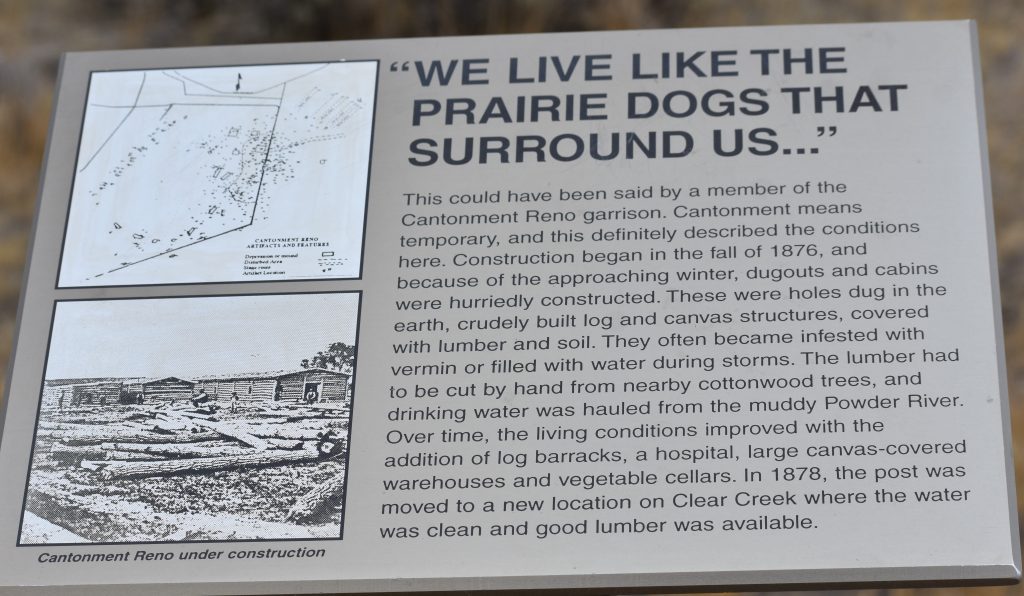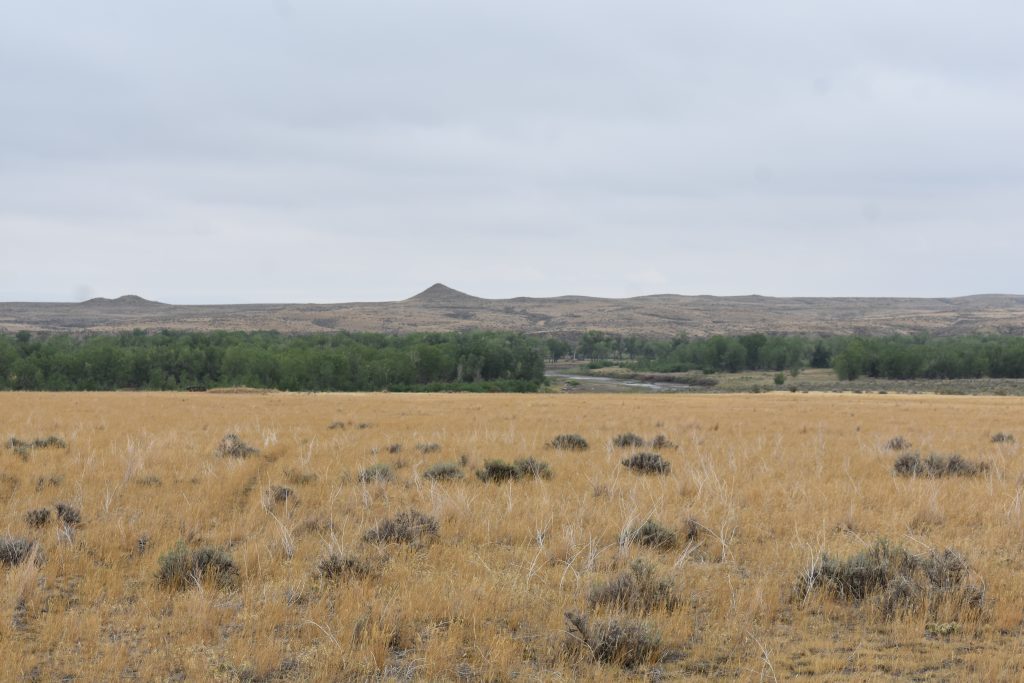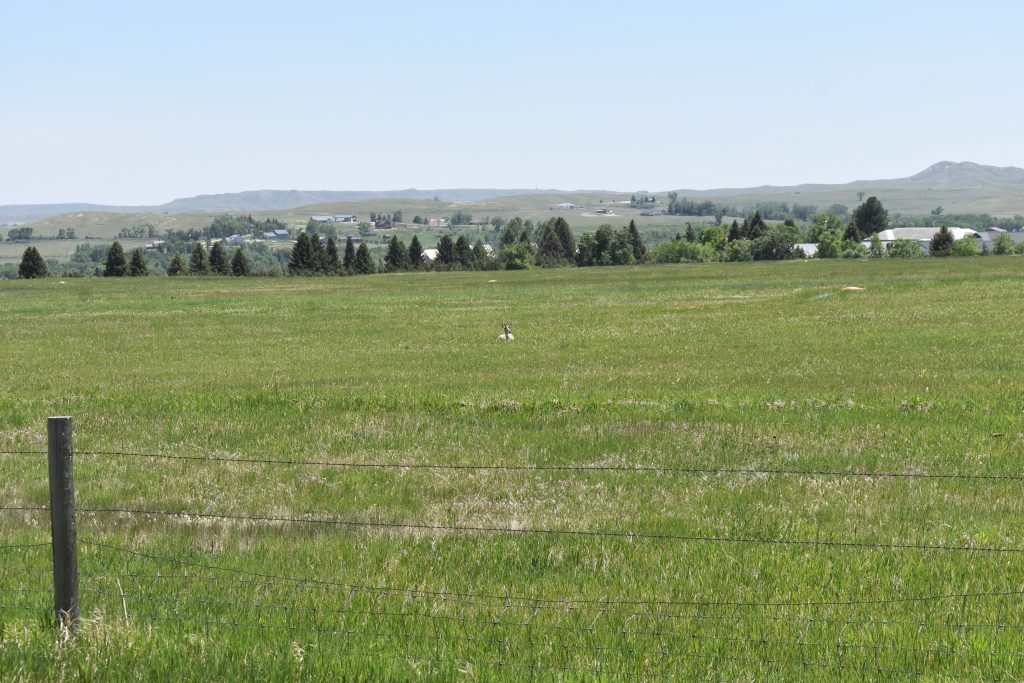alt
Fort McKinney Buffalo, Wyoming
Fort McKinney, near present-day Buffalo, was first built as Cantonment Reno, near Kaycee, in 1877 to help protect the gold seekers on the Bozeman Trail. In November of 1876, a 29-year-old Lieutenant, J. A. McKinney from Fort Reno was the only soldier killed by Cheyenne Indians during the Dull Knife battle on the Red Fork of Powder. To honor his memory and bravery, the name of Fort Reno was changed to Fort McKinney. This post, however, was abandoned in the spring of 1878.

The name, along with the troops, were transferred to a new site just west of present day Buffalo, Wyo. Construction of the new Fort McKinney began in July 1878.
The Cheyenne Weekly Leader had an extensive article about the new fort.
FORT MCKINNEY, Wyoming, August 11,1878.
To the Editor of The Leader: It may not be uninteresting to your many readers to know that a new site has been chosen for the military post of Fort McKinney, Wyoming, some forty miles from the first location on the Powder river.
The new site is located upon Clear Fork, where it debouches from the mountains, and has been well chosen for its military advantages as well as being favorable towards reopening the northwestern portion of the Territory to settlers, so long practically closed heretofore to all but the hardy trapper and adventurous mining prospector.
Lying between this site and the posts of Keogh and Custer, is a vast tract of fertile country well watered, the land arable and susceptible of a high state of cultivation, rich in meadows yielding the finest qualities of hay while the streams and mountains are furnished with cottonwood, poplar, beech and pine.
These three attributes were important to the new Fort McKinney. At the Cantonment Reno, the biggest problems, according to Captain Pollack, was the fact that the cottonwood used for lumber and firewood was in limited supply; the soil offered sparse grazing and the water quality from the sluggish Power River was often full of sediment and tasting of alkali, and the quality was ‘not good,’

The article from the Weekly Leader continues.
New Fort McKinney is situated upon the left bank of Clear Fork, about two miles distant from the mouth of the canyon, through which it descends by a very remarkable declension, which is perhaps two hundred feet to the mile, for a distance of four miles, making a brawling stream, flowing a large volume of water, which is as clear as crystal; cool from its mountain springs, where its head hides under the snows capping the Big Horn mountains.
As yet only the sills of one storehouse for the new post have been laid, aside from a general survey of the ground, but two mills are now set up within the canyon with which lumber will be prepared for the remainder of the buildings.
Excepting the aid of a small number of skilled mechanics, it is expected the post will be erected by the labor of the troops, and something towards that end has already been accomplished. But many are apprehensive it will be almost impossible, with the means at hand, to secure shelter before winter approaches, and view it as ill-advised commencing so late in the season.
All that could be desired in location seems at hand. Nature has worked upon a noble scale here. The scenery is grandly picturesque, and were time taken to digest plans, procure and secure materials and lumber, with competent skilled labor provided to fashion them, a post might be constructed which would be the favorite of the Department.

At it’s peak Fort McKinney had seven companies of troops, which during the 1880 and 90s included four companies of Buffalo Soliders.
The fort had barracks for the troops, and structures for officer quarters, stables, dairy, laundry, a hospital, bakery, and auxiliary buildings. All in all there were around 14 buildings at the Fort.
Troops from the Fort were responsible for keeping the Lakota Sioux and Cheyenne on the government reservations, and preventing an outbreak of hostilities between the Crow and Shoshone tribes and protecting settlers and gold seekers from various roving bands of warriors.
In a Buffalo Echo article in January 7, 1887, one woman tells of her journey from Colorado to Johnson County to join her husband, and she mentions Fort McKinney.
REMINISCENCES Of THE EARLY SETTLEMENT OF JOHNSON COUNTY. BY MRS. D. S. SONNESBERGER Leaving our home on the northern boundary line of Colorado, Sept. 20th. 1878, with heavily loaded teams, we pulled northward for the then little known Big Horn country.
Knowing that New Fort McKinney was just being located at the eastern base of theBig Horn mountains, and feeling that our only safety depended largely upon being near government post, McKinney was our accepted destination.
My husband had preceded me the previous August. This was just at the time of the Cheyenne outbreak in Nebraska, and two years after the Custer massacre. It required nerve to undertake this trip, fraught with danger to life and property at almost every turn in the road.
We traveled at slow rate, encountering nothing worthy of note until we arrival at Powder River and old Fort McKinney, (Fort Reno) From Fetterman we had been in company with Heck Reel’s freighting outfit. We camped on the south side of the river and made an early crossing- Being in advance, we were met by an orderly sergeant, who ordered halt until the commander of the post could get up and permit us to cross the reservation. The army had been removed to the new fort and only some minor officers were kept in charge of me government property.
The government reservation then extended north as far as Shell Creek, and this was as near as we could settle to the post. There we arrived to find log cabin in course of erection on the home ranch by my husband, on the night of November 1st, 1878. Weary of the long, hard journey, we rested for the night and arose early in the morning to find ourselves surrounded by all of the disadvantages of frontier life, no roads except the old trail, and no mails north of Fort McKinney.
The from Fort McKinney troops were often sent to guard the Rock Creek Stage Line, which provided mail, passenger and express service from Rock Creek, on the Union Pacific, the closest railroad to the Fort, 220 miles away. This railroad stop is not far from the towns of Rock River and Medicine Bow, Wyoming.

The troops also went as far as Terry’s Landing on the Yellowstone River east of Miles City, Montana, 270 miles to the north. Terry’s Landing, later Junction City, Montana, was built by General Terry as a supply point for steamboats and freighters traveling from Bismarck, Dakota Territory, to Miles City. The steamboats carried troops and supplies to the frontier posts up and down the Yellowstone and the Powder River from 1870 to 1883.
The Fort McKinney troops also built and maintained the first telegraph line into the Powder River country.
Probably the best known engagement of the troops from Fort McKinney was during the Johnson County War. In April of 1892 troops were sent to the T.A. Ranch, south of Buffalo, to quell the tensions between stock growers and alleged cattle thieves.

With the Indian problems ended, and the Johnson County War over, in 1894 Fort McKinney was no longer necessary, and was abandoned. Many of the buildings were dismantled, but in 1903 the Veterans’ Home of Wyoming moved to the site of the old fort.
Today, two buildings, the hospital and dairy, still remain at the site. A highway interpretive sign gives some of the history of the site, and reminds us of what difficult conditions once faced the soldiers who were protecting the trails for settlers and gold seekers.

